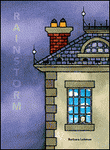
I have had the privilege to share my life with many wonderful cats. Most of them have been mixed breeds of some kind, and all of them have been rescues. The only single breed cats I have had are Siamese, which are often slightly neurotic but always loving and interesting. Their beauty and singular ways have charmed people all over the world ever since the breed became available outside of Thailand, which is where they were first selectively bred.
Today's poetry picture book looks at a few of the world's most popular cat breeds. The haiku on the pages beautifully capture the quixotic and fascinating personalities of these wonderful animals.
The Maine Coon’s Haiku and other poems for cat lovers
Michael J. Rosen
Illustrated by Lee White
Poetry Picture Book
For ages 7 and up
Candlewick Press, 2015, 978-0-7636-6492-3
Poets have been writing odes to cats for centuries; poems of many forms have danced off their pens and pencils as they have tried to understand the enigmatic, secretive, independent, and yet loving nature of one of man’s most beloved pets.
In this wonderful book Michael J. Rosen explores the lives of cats, capturing those special moments that delight, entrance and puzzle their owners. Each carefully crafted haiku is about a different cat breed, and each poem presents readers with a moment in time, a pause, when they can revel in three lines of words that capture an image, a moment, to perfection.
We begin with a Maine Coon which is indoors “crouched before the couch.” It is there because it has heard a sound that has its full and undivided attention. The cat has heard a mouse moving around.
The Ragdoll that we meet next is not in the mood for doing much at all at the moment. It lies, with its fluffy tail curled around it, “beneath the ivy.” The cat was busy not long ago though, for we can see that it “halved the blameless hearts,” tearing many of the plant’s glossy leaves to pieces.
Later, on the street, we meet a British Shorthair, an elegant grey feline who has planted “mud daisies / along the polished hillside” of some cars. There they are, little muddy paw prints weaving their way across hoods, roofs, and trunks.
Back indoors an Abyssinian has decided that the book on your lap is the only place it wants to be. You may want, perhaps even need, to turn the page, but the cat does not “care what happens next / now’s the only page,” which probably means that it may be a while before the next pages get read.
In addition to the wonderful poems, the author provides readers with further information about the twenty breeds of cats mentioned in the book. Reader swill find out, among other things, that Siamese cats were entrusted with taking care of their royal mistress’s rings. The rings would be placed on the cat’s tails for safe keeping. Norwegian Forest cats have been living in Norway’s forests since the time of the Vikings. Unlike many cats, these especially thick-coated animals can climb down a tree using their claws. Most cats who climb trees jump down in stages or get stuck!
Throughout the book the wonderful poems are accompanied by Lee White’s expressive artwork.








